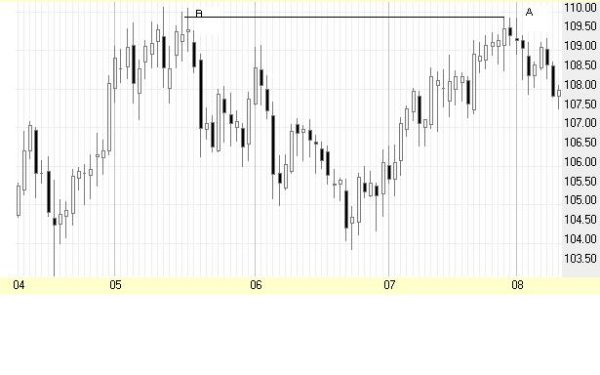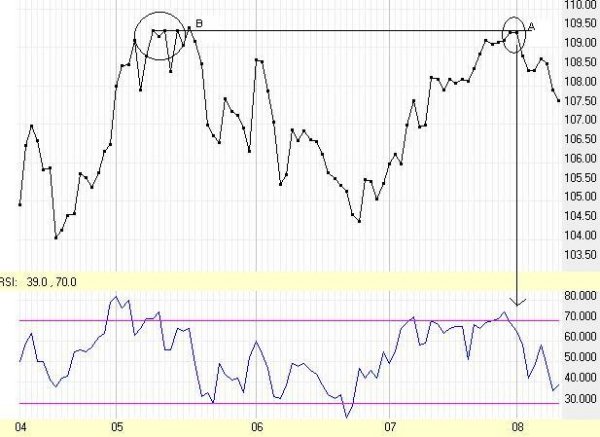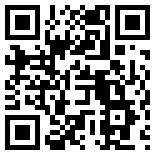|
Prosticks Articles
信報 --- 八月十四日
切勿摸頂才沽貨
美元兌日圓在7月由104反彈至110後,現正進入調整階段,為文時已低見107.5。
6月中開始的反彈,一直去到A位(109.87)才開始調整。A與主要頂位B(110.13)
很接近,表示之前頂位再一次發揮阻力作用,阻止價位繼續上升(圖一)。
然而,再看仔細,可以發現A的頂位略低於B的頂位,在低位買入美元的投資者,由於看見
B是之前的重要頂位,他或許期望,在沽售壓力再現之前,價位將升到B。可是,實際上
A是去不到B的頂位,若不能把握時機沽出,他的賬面利潤將在調整階段縮減。
由於市場存在不同因素,包括突發的資金流動、隨機抽樣因素等,令個別的交易價格,並不可靠。利用個別價位來定止蝕或獲利也不可靠。
但聚焦點卻值得信賴,因為它們不是由某個單一訊號組成,而是當天最多交易發生的價位。
日圓的聚焦點線圖是連接所有聚焦點而成(圖二)。A附近的兩個聚焦點,與B處的幾個聚焦點有同一價位。
因此,當陰陽燭圖顯示A的頂位低過B的頂位時,在乾坤燭圖中卻可以看到,以聚焦點而言,A同
B的頂位實際上是同一價位。
若投資者發現A同B的聚焦點排成直線,而且在A處,RSI亦已超買開始下跌,他不會等真正到達B的頂位才沽貨離場。
(有關乾坤燭之連載可於乾坤燭網站 www.prosticks.com 內觀看)

圖一 美元兌日圓陰陽燭走勢
(2000年4月5日 - 8月10日)

圖二 美元兌日圓乾坤燭聚焦點走勢
(2000年4月5日 - 8月10日)
| 

